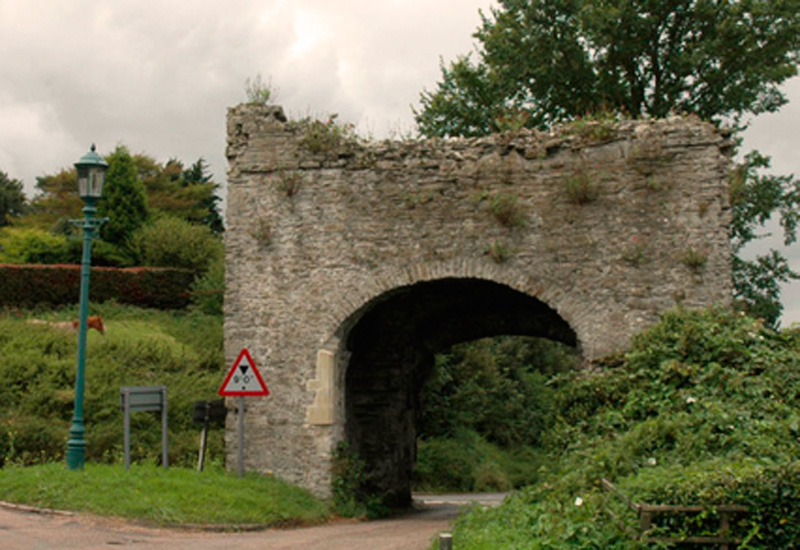The Corporation of Winchelsea is under siege over its plans to repair the Pipewell or Ferry Gate, which are raising increasing concerns among some residents. In order to secure a grant from the Heritage Lottery Fund, the corporation believes that it will have to “enhance” the visitor experience. It proposes to provide facilities such as an information panel and to fence off the gate to protect visitors from the traffic on the A259, as well as closing the road under the gate and making the street leading to the gate one-way.
All residents who have commented on the corporation’s plans have expressed support for repairs to the Pipewell Gate and few have objected to the idea of an information panel. But there is growing unease about the idea of fencing, road closure and more traffic signs. There is also confusion over the details of the corporation proposal. At a public exhibition held last year, the corporation displayed a drawing showing a plan of the gate and a computer simulation showing a different version of the scheme. The computer simulation showed modern metal railings wrapped around the entire gate (the corporation has since suggested a wooden fence).
Critics of the current proposals argue that fencing is unnecessary, as visitors will be in no more danger from traffic than they are now. They also contest the suggestion that traffic is a hazard, saying that few vehicles turn off the A259 at the Pipewell Gate and that any that do have to slow down to get through the gate. But critics are most exercised about the proposed fencing. Some mutter darkly about “Disneyfication”. They all say fencing would inappropriately clutter the ancient monument with modern traffic furniture. According to conservation lobby group, Winchelsea Heritage, “the proposed railings displayed on the computer-generated model at the public exhibition were truly awful. But any railings would detract from the essential simplicity and historical authenticity of the gate, particularly if it were to be combined with badly chosen new paving, an intrusively located interpretation board and extra street signs. And there is, moreover, no real case for fencing or road closure.”
These concerns have been echoed by Winchelsea Archaeological Society, which has contributed to the funding of the repairs. “The Pipewell Gate must not become an isolated traffic island” the society says. “Ancient monuments should be left as far as possible in some sort of historical context. This means not adding more signs and other modern impedimentia. Indeed, the need is to remove, reduce or relocate the existing decrepit and surplus traffic signage, which is just an eyesore. If JMW Turner, who sketched the gate many times, were to return to Winchelsea, he would likely think it an eyesore and not worth drawing again.”
The corporation argues that fencing is needed to protect visitors such as school parties. But opponents dismiss the idea that the traffic is a problem or that restoring the gate would attract any more visitors. They claim that the Pipewell Gate is too out of the way and far less attractive than the the Strand Gate. As for school parties, they say that schools are obliged by their own health and safety rules to have adequate numbers of supervisors. And it is noted that there is no official risk assessment identifying a need for fencing or road closure (but ironically there is one identifying the risks created by these proposals).
The current debate has led one resident to observe that the last time the Pipewell Gate attracted this much attention was in 1380, when it was reputedly damaged in the Franco-Castilian raid on Winchelsea.
Richard Comotto is a member of Winchelsea Heritage group
Photo: Richard Comotto



